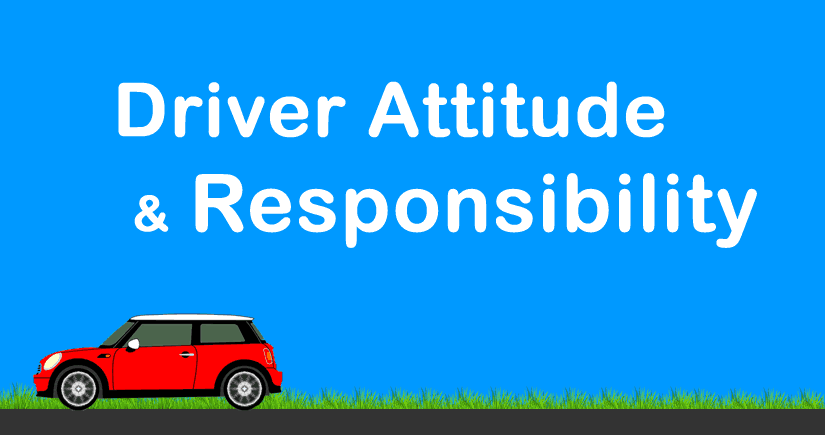Driver Attitude and Responsibility
Over the decades, road accident casualties have significantly reduced. This is in part due to ever increasing vehicle safety standards and also improved learner driver training. Learning to drive and passing the driving test should just the beginning of a lifelong commitment to road safety.
As a new driver and particularly if you’re male, you may consider yourself a good driver. But ask yourself, what is a good driver? Is a good driver one that never makes any mistakes? A good driver is not a perfect driver but one who is able to recognise that there is always more to learn and improvements to be made.
Your practical driving skills will improve over time, but to become a good driver, it requires having a good driver’s attitude and to take responsibility. A good driver’s attitude and responsibilities includes:
- Concentration
- Awareness
- Anticipation and Planning
- Patience
- Mental and Physical Health
- Confidence
- Vehicle Safety
Concentration
A lapse in concentration can easily lead to an accident. Technology such as satellite navigation systems (sat-nav) can cause distraction. When observing the sat-nav screen, do so for brief moments to only, then revert your eyes back to the road. If you need to make any adjustments to the sat-nav, first stop in a safe and legal place before doing so. Other in-car technology such as the stereo system can also cause distraction especially if selecting tracks, tuning the radio and listening to loud music while on the move.
If taking your mobile phone into the vehicle with you, switch it off before driving select silent mode before driving to avoid it causing distraction.
Other common sources of distraction can be your passengers. Chatting to your passengers can distract your driving, so don’t be afraid to ask for a little silence when required.
Awareness
Awareness is to know what’s going on around you. Use your mirrors frequently and always use your mirrors before changing speed or direction. Constantly scan the road ahead for potential hazards and when needed, look over you shoulder to check the blind spot to the left or right of your car.
Anticipation and Planning
Anticipation in driving requires concentration and awareness and requires the driver to plan ahead for potential hazards and to be prepared to take action. Anticipation and planning improves with experience and is one of the most important aspects of driver safety.
Patience
With increasingly congested roads, frustration can result in a loss of patience particularly when confronted by bad behavior of other drivers. Try your best to not react to another drivers actions and remain calm. If you become angry, consider slowing down and if necessary, stop to take a break. Driving in a angry or aggressive state reduces your concentration and awareness.
Mental and Physical Health
Be aware of your own mental and physical health and avoid driving if you’re feeling tired or unwell as this can significantly reduce your ability to focus and concentrate. Driving while emotional such as anger or feeling upset will also affect concentration.
Confidence
Confidence is important when driving and if typically related to experience and level of skill. It’s important to have a realistic view of your confidence as overconfidence can result in unsafe driving. Male drivers who have just passed the driving test can often exhibit high levels of confidence with their driving ability which accounts for the high rate of accidents for young male driver.
For some drivers, their confidence can decline over time particularly if they’ve been involved in a motoring incident. Driving instructors offer confidence boosting courses for such instances.
While confidence is essential for driving, it’s equally important to have a realistic view of your abilities and that there’s is always improvements to be made. A good driver understands that they are not a perfect driver and that their driving skills can always be improved.
Vehicle Safety
While the responsibility of how a vehicle is driven is determined by the driver, so too is the roadworthiness of the vehicle. It is the driver’s responsibility to ensure their vehicle is legal and safe to drive. This includes:
- Ensuring your car is insured for use on public roads
- Is taxed (if applicable)
- Has a valid MOT (if the vehicle is three years or older)
- Has road legal tyres and where tyre pressures are maintained
